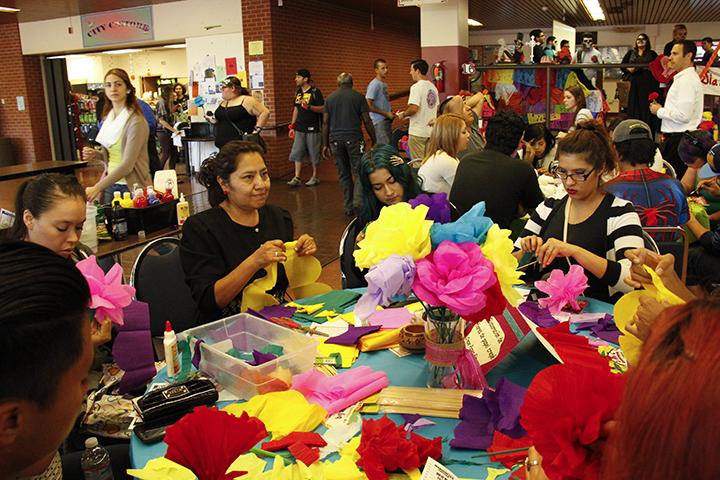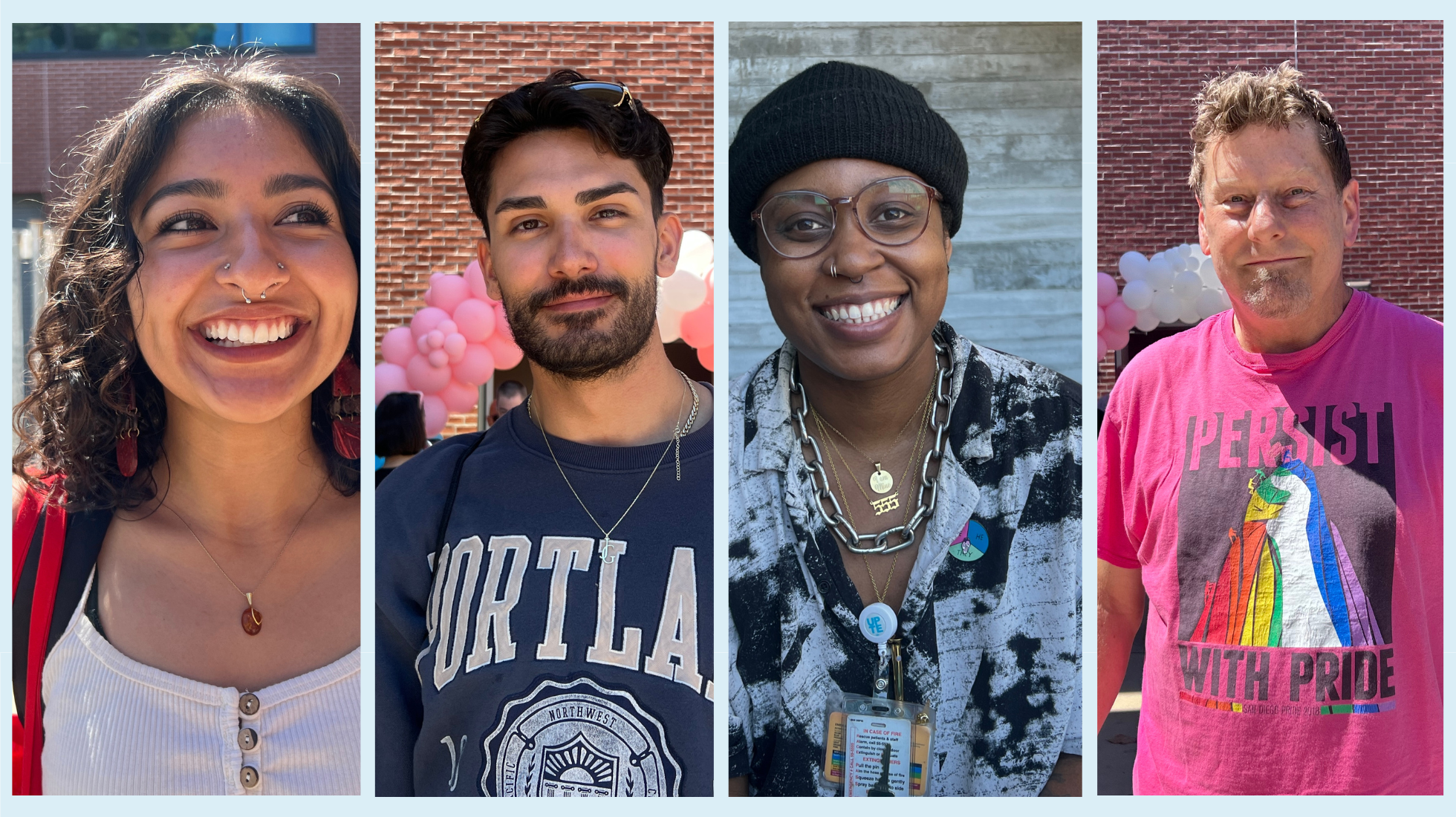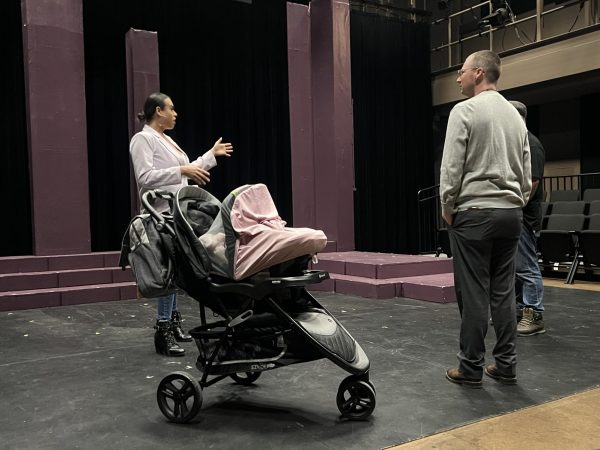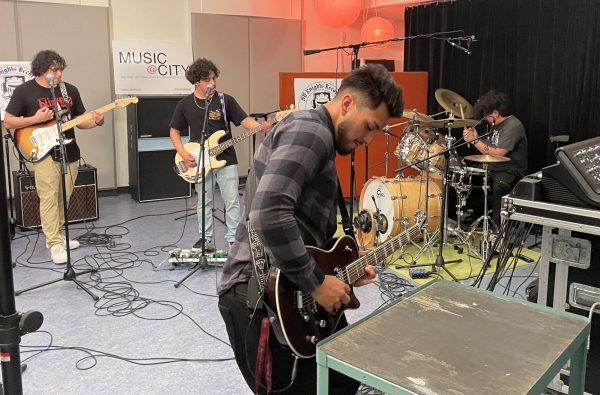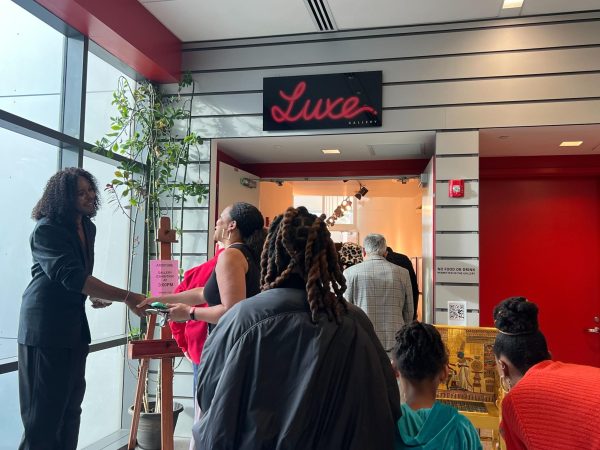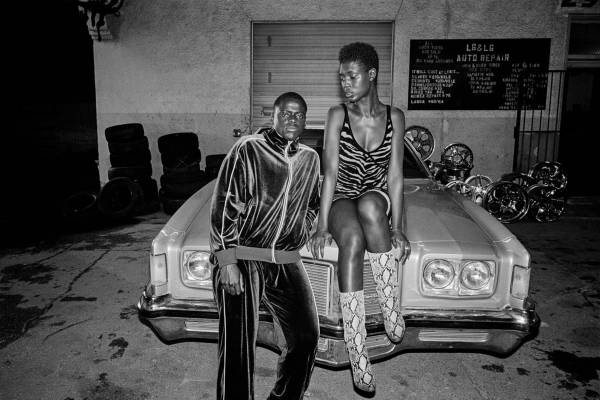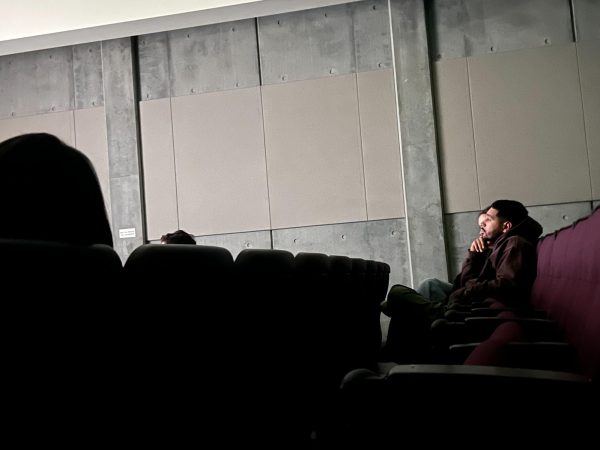Celebrating the dead
Students create crepe paper flowers to adorn Dia de los Muertos altars during the Oct. 30 event in the cafeteria. Photo credit: Celia Jimenez
November 19, 2014
Living near the border doesn’t come without a cultural benefit. In this case San Diego gets to share with Mexico one of their most picturesque traditions: the celebration of Dia de los Muertos or Day of the Dead.
The Language Department held a Dia de los Muertos celebration on Oct. 30 inside the cafeteria with 300 students and faculty in attendance.
Festivities included slide- show presentations on the history of Dia de los Muertos, short films, sugar skull face painting, painting of masks, playing loteria (bingo), making flowers out of colored tissue paper and making traditional papel picado, which involves cutting paper into elaborate designs.
The Day of The Dead is a Mexican holiday that is celebrated throughout Central and Southern America. It is a day for loved ones to reunite with the deceased.
“The event was put together for students to have a cultural experience and also remember their loved ones. I love it and do it for the passion,” said Spanish professor Lupita Adame, who put the event together.
There was a decorating of the altar competition which included more than 20 altars. Some were dedicated to loved ones who have passed away, while others were dedicated to celebrities including the singer Selena.
The altar, which is made to honor the dead, is made of a few main elements. There are flowers, scents such as incense, are used to guide the spirits of the dead back home and water is placed on the altar to refresh the dead from their long journey back. The favorite foods and fruits of the deceased are also placed among the other decorations.
Student Sarah Veliz, who is part of the group Students in Power, put together an altar dedicated to the many men, women and children killed unjustly by law enforcement.
However, instead of placing photos of those killed, she placed a banner that held more than 200 names.
“I wanted to represent not just one person, but everybody,” Veliz said.
The altar included toys to represent the children, nail polish to represent the teenagers and alcohol to represent the adults.
“We live very close to the border and have a tight connection with our community. I think it is very critical that students have a deep understanding of Dia de los Muertos,” Luis Perez, counselor and mentor for the Puente program and club, commented.
“We have to make sure the meaning is retained for our community due to the commercialization of the holiday,” Perez said.


